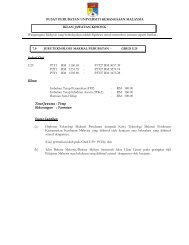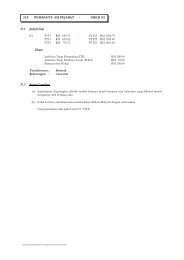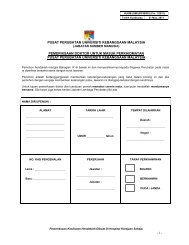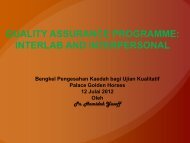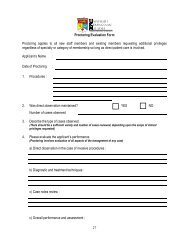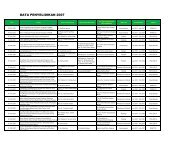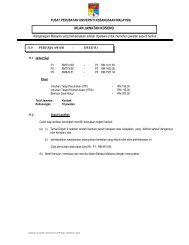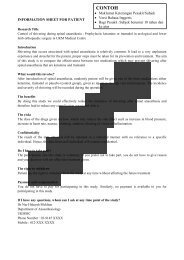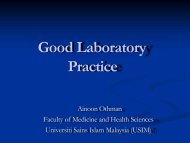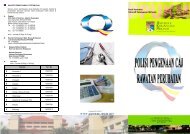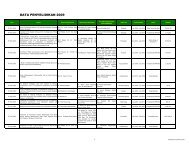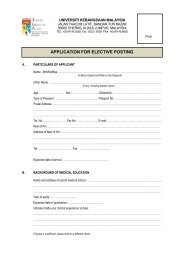sini - UKM Medical Centre - Universiti Kebangsaan Malaysia
sini - UKM Medical Centre - Universiti Kebangsaan Malaysia
sini - UKM Medical Centre - Universiti Kebangsaan Malaysia
Create successful ePaper yourself
Turn your PDF publications into a flip-book with our unique Google optimized e-Paper software.
Fakulti Perubatan • 127problem-based learning. Finally, we hope that the students will strive hardto achieve success in this course which will be conducted in 8 weeks.Haematoimmunology System (S4.2) ModuleThe haematoimmunology system consists of blood and lymphoid tissues.It concerns the study of blood, the blood-forming organs, and blooddiseases. Blood contains three types of blood cells. They are erythrocytes,leucocytes and thrombocytes. Erythrocytes transport oxygen in the blood.Lymphoid tissue is part of the body’s immune system that helps to protectit from bacteria and other foreign entities. The function of leucocyte can bedisturbed by the formation of neoplasm. The thrombocytes and other factorscontributing to haemostasis will be further discussed in this module. Therest of the module will deal with immunology. The haematoimmunologysystem is related to the human life, from a cell to organism and from infancyto elderly. Students will find this topic interesting. This system includesethical concepts, public health issues and epidemiological tools. The moduleis taught in a systematic sequence of themes by means of lectures, laboratoryactivities, laboratory skills, class discussions, extramural activities andtutorials as the core of problem-based learning. Finally, we hope that thestudents will strive hard to achieve success in this course which will beconducted in 8 weeks.Cardiovascular System (S5.1) ModuleThe cardiovascular system makes up the network that delivers blood to thebody’s tissues. With each heartbeat, blood is sent throughout our bodies,carrying oxygen and nutrients to all our cells. The cardiovascular system isour body’s lifeline. It is composed of the heart and blood vessels, includingarteries, veins, and capillaries. The heart is the vital organ in the circulatorysystem. Its main function is to propel blood throughout the body. Problemssuch as arrhythmia, and heart failure can occur in the cardiovascular system.Any abnormalities in the heart can be transferred via the vascular system toother organs. The closest organ is the lung via pulmonary circulation. Thevascular system has its own regulation to maintain proper vascular tone foreffective and efficient organ perfusion. Multiple organ failure may occuronce this mechanism is disturbed. The cardiovascular system is related tothe human life, from a cell to organism and from infancy to elderly. Studentswill find this topic interesting. This system includes ethical concepts, publichealth issue and epidemiological tools. The module is taught in a systematicsequence of themes by means of lectures, laboratory activities, laboratoryskills, class discussions, extramural activities and tutorials as the core ofproblem-based learning. Finally, we hope that the students will strive hardto achieve success in this course which will be conducted in 8 weeks.



